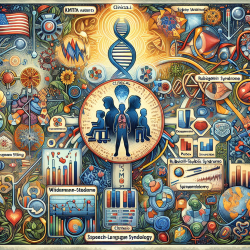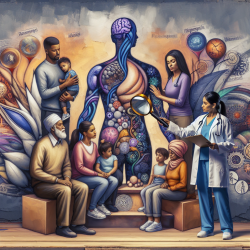Understanding Social Anxiety Disorder Through NK1 Receptor Availability
Social Anxiety Disorder (SAD) is a prevalent mental health issue affecting 10-15% of the population. Recent research has uncovered a potential biomarker in the form of increased neurokinin-1 (NK1) receptor availability in the amygdala, which could revolutionize how practitioners approach this condition. This blog delves into the findings of a groundbreaking study and explores how these insights can enhance therapeutic outcomes for children with SAD.
The Study: A Closer Look
The study titled "Increased neurokinin-1 receptor availability in the amygdala in social anxiety disorder: a positron emission tomography study with [11C]GR205171" utilized positron emission tomography (PET) to compare NK1 receptor availability in patients with SAD and healthy controls. The results indicated a significant increase in NK1 receptor availability in the right amygdala of SAD patients. This finding aligns with previous research suggesting the role of the SP/NK1 system in stress and anxiety.
Implications for Practitioners
Understanding the neurochemical underpinnings of SAD can significantly impact therapeutic strategies. Here are some ways practitioners can leverage these findings:
- Personalized Treatment Plans: By recognizing the role of NK1 receptors, practitioners can tailor interventions that specifically target the amygdala's stress response mechanisms.
- Innovative Therapies: Consider incorporating NK1 receptor antagonists into treatment plans, which have shown promise in reducing anxiety symptoms.
- Enhanced Monitoring: Use these insights to better monitor and predict treatment outcomes, adjusting strategies as needed to optimize efficacy.
Encouraging Further Research
While the study provides valuable insights, further research is essential to fully understand the implications of NK1 receptor availability in SAD. Practitioners are encouraged to engage in or support ongoing research efforts to explore the long-term effects of NK1 receptor antagonists and their potential in treating other anxiety disorders.
Conclusion
The discovery of increased NK1 receptor availability in the amygdala of SAD patients offers a promising avenue for improving therapeutic outcomes. By integrating these findings into practice, practitioners can enhance their understanding and treatment of social anxiety, ultimately benefiting the children they serve.
To read the original research paper, please follow this link: Increased neurokinin-1 receptor availability in the amygdala in social anxiety disorder: a positron emission tomography study with [11C]GR205171.










